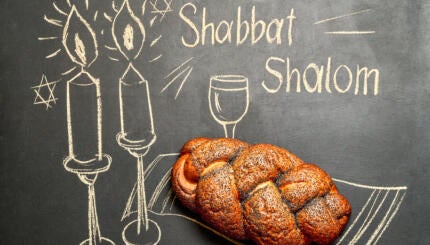This article was written in response to Leon Wieseltier’s working paper, Language, Identity, and the Scandal of American Jewry, which was presented at the Bronfman Vision Forum’s Judaism as Civilizations: Belonging in Age of Multiple Identities, a project of The Samuel Bronfman Foundation.
Writing at the turn of the 20th century, Moses Weinberger, a disgruntled rabbi who hailed originally from Hungary, limned a scathing portrait of America’s Jews. By his lights, they were an empty-headed, foolish bunch, given to strutting and preening and not much else. If Weinberger had his druthers, European Jews would not make the same mistake he did. They would think twice before crossing the high seas to throw in their lot with this community of dunderheads.
Though Leon Wieseltier‘s prose is far more nimble, his range of sources far more encyclopedic, and his sensibility far more knowing and canny than Weinberger’s, the celebrated New Republic literary editor and cultural critic is at one with the good rabbi in his unabashed disdain for American Jewry.

Abraham Geiger believed Hebrew
to be dead in the 19th Century.
In his “Language, Identity, and the Scandal of American Jewry,” Wieseltier, like Weinberger before him, cannot find a kind word to say about his American coreligionists, whom he dubs the “spoiled brats of Jewish history.” That America’s Jews have created an unparalleled network of Jewish institutions of higher learning, dramatically expanded the range of opportunities for Jewish women, and in things large and small display enormous cultural vitality and originality at the grass roots is, for him, of paltry, glancing significance when compared with what he takes to be the community’s wanton disregard of its textual and linguistic patrimonies.
With your help, My Jewish Learning can provide endless opportunities for learning, connection and discovery.
Alternately saddened by and infuriated at American Jewry’s putative failure to hold on tight to Hebrew and Yiddish, Wieseltier acts as if his fellow American Jews have let him down.
Back in Germany
Perhaps they have. But then, American Jewry is hardly the first modern Jewish community to turn its back on Hebrew. In its rejection of that language, German Jewry had its New World counterparts beat by a mile–and a century.
The “Hebrew language has ceased to be alive for the people,” Abraham Geiger categorically declared in 1845. “A German prayer strikes a deeper chord than a Hebrew prayer.” To those who would argue that without Hebrew, Judaism would simply wither away, he gave no quarter, declaring that “anyone who imagines Judaism to be walking on the crutches of a language deeply offends it.”
Wieseltier’s indictment of America’s Jews sidesteps the Geigers of Jewish history. He makes it seem as if the Jews of America are the first and only Jews ever to barter away their linguistic rights. I suspect that’s because he views German Jewry’s wholesale abandonment of Jewish languages as programmatic, deliberate, purposeful, and even noble–part of a national project of redefinition.
Not so American Jewry. Its abandonment of Hebrew, Wieseltier would argue, is casual, heedless, inadvertent: the result of anomie, of hefker, rather than of thought and deliberation. And in his book, that’s the graver sin.
Adventures in Yiddishland
As for Yiddish, things on that front are also far more complex than would appear at first blush. That storied lingua franca has become what cultural historian Jeffrey Shandler calls a “post-vernacular” language, whose multiple expressions he incisively analyzes in his recent book Adventures in Yiddishland (2008).
The subject of sustained study at the university level as well as a social bond, a wellspring of words, the stuff of material culture, Yiddish has assumed new forms in the New World. While it’s true that the use of Yiddish in contemporary America is significantly different than what it once was, “it hasn’t just died,” Shandler insists.
On the contrary. Its post-vernacular expressions, which range from week-long Yiddish festivals and immersion courses like those sponsored by Yiddishkayt Los Angeles to advertisements for popular American products that make use of Yiddish–Absolut Tchotchke, anyone?–have, curiously enough, endowed the language with a new significance.
Wieseltier would have none of this. As far as he’s concerned, Yiddish lies six feet under in modern America. That’s because cultural literacy rather than creativity is his yardstick of communal vitality; what matters to him is the mastery of traditional sources, not the invention of new ones.
American Jewish Cultural Health
It’s not that I disagree entirely with my good friend’s dire assessment. I, too, have been known to throw up my hands in despair at those of my coreligionists who believe that Shabbat ends with breakfast on Saturday morning, or who privilege episodes of “Curb Your Enthusiasm” over a blatt of gemara, or whose torah is “Fiddler on the Roof.” I, too, am not happy when fellow Jews can’t distinguish between a midrash and the Mishneh Torah or when they prefer their encounters with Jewish history to be laced with sentimentality and weepiness rather than dispassionate analysis and scholarship.

Does Jewish culture go beyond
“Curb Your Enthusiasm?”
All the same, I’m not prepared to throw in the towel, not quite yet, or, for that matter, to sound the death knell. American Jewry, I strongly believe, contains many more indices of cultural health than Wieseltier is prepared to acknowledge.
Take, for example, the American Jewish community’s reception of the Valmadonna Trust Library, the world’s largest collection of Hebrew books, at Sotheby’s in 2008. Boys with payos and boys without; women in sheitlakh and women in dreadlocks, frummer yidn and avowed secularists from across the country flooded the auction house, waiting in line, sometimes for hours at a stretch, to celebrate the Jewish book. In the galleries, whose white walls were lined floor to ceiling with one sample after another of manuscripts, incunabula, printed books, folios, broadsides, and other textual curiosities, people stood cheek by jowl, taking in the majesty, the sheer sweep, of it all.
The air in the room was palpable with excitement, even a touch giddy. The staff at Sotheby’s, I was told, had never seen anything quite like this, nor had I. You couldn’t help but be swept away by the sight of all those books and all those people in mutual embrace.
Skeptics might say that looking at Jewish books in glass cases only reinforces Wieseltier’s argument, but they’d be missing the point. What was on display at Sotheby’s was not just a treasure trove of rarieties but a community of people that had the intellectual wherewithal to appreciate–and celebrate–them.
But then, textual proficiency is surely not the only measure of the community’s vitality–not in postmodern America, anyway. Adding visual culture to the mix makes for a pretty picture, indeed. From innumerable films on Jewish subjects and the one hundred film festivals that showcase them annually to arresting new forms of Jewish ritual expression like those on view at the Jewish Museum’s 2009-10 exhibition “Reinventing Ritual,” American Jewish life pulses with imagination, creativity, and energy.
Leon Wieseltier ought to take heart from all of this and rather than write an epitaph for American Jewry, he just might allow himself to breathe a little easier.
Shabbat
Pronounced: shuh-BAHT or shah-BAHT, Origin: Hebrew, the Sabbath, from sundown Friday to sundown Saturday.


